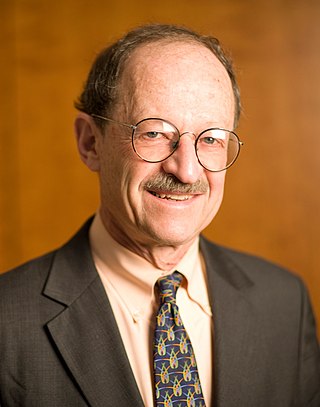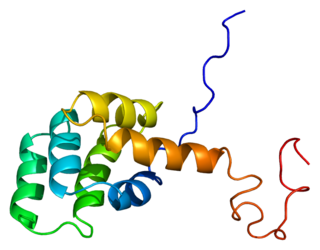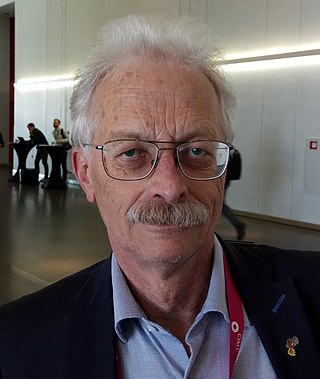
Harold Eliot Varmus is an American Nobel Prize-winning scientist. He is currently the Lewis Thomas University Professor of Medicine at Weill Cornell Medicine and a senior associate at the New York Genome Center.
Tak Wah Mak, is a Canadian medical researcher, geneticist, oncologist, and biochemist. He first became widely known for his discovery of the T-cell receptor in 1983 and pioneering work in the genetics of immunology. In 1995, Mak published a landmark paper on the discovery of the function of the immune checkpoint protein CTLA-4, thus opening the path for immunotherapy/checkpoint inhibitors as a means of cancer treatment. Mak is also the founder of Agios Pharmaceuticals, whose lead compound, IDHIFA®, was approved by the FDA for acute myeloid leukemia in August 2017, becoming the first drug specifically targeting cancer metabolism to be used for cancer treatment. He has worked in a variety of areas including biochemistry, immunology, and cancer genetics.
The Gottfried Wilhelm Leibniz Prize, in short Leibniz Prize, is awarded by the German Research Foundation to "exceptional scientists and academics for their outstanding achievements in the field of research". Since 1986, up to ten prizes are awarded annually to individuals or research groups working at a research institution in Germany or at a German research institution abroad. It is considered the most important research award in Germany.

Steven A. Rosenberg is an American cancer researcher and surgeon, chief of Surgery at the National Cancer Institute in Bethesda, Maryland and a Professor of Surgery at the Uniformed Services University of Health Sciences and the George Washington University School of Medicine and Health Sciences. He pioneered the development of immunotherapy that has resulted in the first effective immunotherapies and the development of gene therapy. He is the first researcher to successfully insert foreign genes into humans.

Bruton's tyrosine kinase, also known as tyrosine-protein kinase BTK, is a tyrosine kinase that is encoded by the BTK gene in humans. BTK plays a crucial role in B cell development.

The Fas receptor, also known as Fas, FasR, apoptosis antigen 1, cluster of differentiation 95 (CD95) or tumor necrosis factor receptor superfamily member 6 (TNFRSF6), is a protein that in humans is encoded by the FAS gene. Fas was first identified using a monoclonal antibody generated by immunizing mice with the FS-7 cell line. Thus, the name Fas is derived from FS-7-associated surface antigen.

The death-inducing signaling complex or DISC is a multi-protein complex formed by members of the death receptor family of apoptosis-inducing cellular receptors. A typical example is FasR, which forms the DISC upon trimerization as a result of its ligand (FasL) binding. The DISC is composed of the death receptor, FADD, and caspase 8. It transduces a downstream signal cascade resulting in apoptosis.

FAS-associated death domain protein, also called MORT1, is encoded by the FADD gene on the 11q13.3 region of chromosome 11 in humans.

The German Cancer Research Center is a national cancer research center based in Heidelberg, Germany. It is a member of the Helmholtz Association of German Research Centres, the largest scientific organization in Germany.

Sanford Burnham Prebys is a 501(c)(3) non-profit medical research institute focusing on basic and translational research, with major research programs in cancer, neurodegeneration, diabetes, infectious, inflammatory, and childhood diseases. The institute also specializes in stem cell research and drug discovery technologies.

HLA-G histocompatibility antigen, class I, G, also known as human leukocyte antigen G (HLA-G), is a protein that in humans is encoded by the HLA-G gene.

Tumor necrosis factor receptor 2 (TNFR2), also known as tumor necrosis factor receptor superfamily member 1B (TNFRSF1B) and CD120b, is one of two membrane receptors that binds tumor necrosis factor-alpha (TNFα). Like its counterpart, tumor necrosis factor receptor 1 (TNFR1), the extracellular region of TNFR2 consists of four cysteine-rich domains which allow for binding to TNFα. TNFR1 and TNFR2 possess different functions when bound to TNFα due to differences in their intracellular structures, such as TNFR2 lacking a death domain (DD).

University Hospital Heidelberg is a university hospital in Heidelberg, Germany and is with 1,991 beds one of the largest medical centers in the country. It is closely linked to Heidelberg University Medical School which was founded in 1388 and is thus the oldest within the Federal Republic of Germany.

Harald zur Hausen NAS EASA APS is a German virologist and professor emeritus. He has done research on cervical cancer and discovered the role of papilloma viruses in cervical cancer, for which he received the Nobel Prize in Physiology or Medicine 2008.

Otmar D. Wiestler is a German physician, a professor at the University of Heidelberg and president of the Helmholtz Association. He is not a typical basic scientist, but he successfully entered a number of highly popular fields of clinical research, including cancer research, tumor genetics and, more recently, stem cell research. He focuses on technology transfer of already existing technologies from basic science into clinical use, rather than developing the basic science.
Lutz Gissmann is a German virologist and was head of the Division “Genome Modifications and Carcinogenesis” at the German Cancer Research Center (DKFZ) in Heidelberg until his retirement in 2015. Lutz Gissmann is known for his seminal research in the field of human papillomaviruses (HPV) and their causal association with human cancer, especially cervical cancer. In his early work, he demonstrated genetic heterogeneity among HPV isolates leading the way to the now well-established concept of distinct HPV types of which some are associated with specific benign or malignant disease. In the early 1980s in the laboratory of later Nobel Prize laureate Harald zur Hausen he was the first to isolate and characterize HPV16 and HPV18, the two most oncogenic HPV types causing the vast majority of HPV-induced anogenital and head-and-neck cancers. This groundbreaking work of Lutz Gissmann provided experimental evidence for the causal association of specific HPV types with human cancer, and laid the foundation for the development of prophylactic HPV vaccines for the prevention of cervical cancer and other HPV-induced cancers. His current research interest is on development of second generation prophylactic and therapeutic HPV vaccines.

Hans-Georg Rammensee is a German immunologist and cancer researcher. He has been Chair Professor and Head of the Department of Immunology at the University of Tübingen since 1996. Rammensee has contributed essentially to the research fields of MHC biology and tumor immunology and to the development of cancer immunotherapies.
Hedda Wardemann is an immunologist and Professor in the Division of B cell immunology at the German Cancer Research Center in Heidelberg, Germany.

Fabian Kiessling is a German radiologist, university lecturer and author as well as a scientist in the field of molecular imaging.
Cornelis Joseph Maria Melief is a globally recognised immunology expert specialising in cancer immunology and immunotherapy, with special focus on therapeutic cancer vaccines. He is Emeritus Professor, former head of the Department of Immunohematology and Blood Transfusion at the Leiden University Medical Center, and Chief Scientific Officer at ISA Therapeutics in Netherlands. He is known for his work in the field of cancer immunology, devising new cancer therapies based on the activation of the patient’s own immune system.















